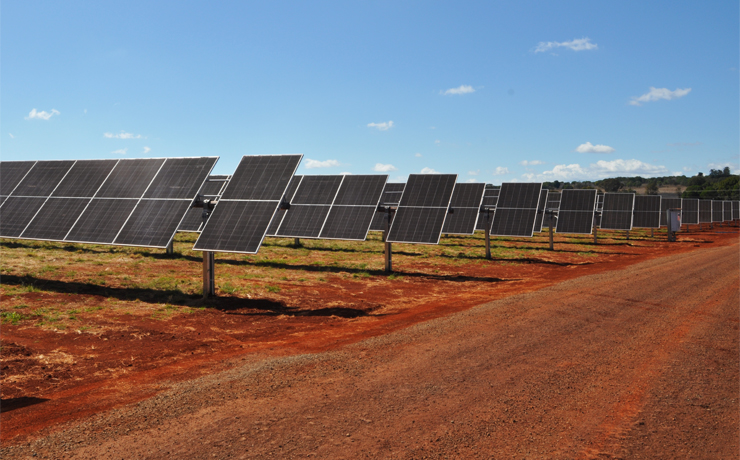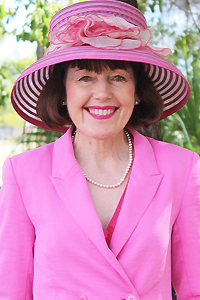

May 17, 2024
South Burnett Regional Council has called for a moratorium on renewable energy projects in the region unless certain conditions are met – and will ask other Wide Bay-Burnett councils to do likewise.
SBRC councillors unanimously endorsed a motion put forward this week by Mayor Kathy Duff that a moratorium of all large-scale wind, solar, battery energy storage systems, pumped hydro and related transmission projects be imposed until:
1. A bond is held from start of any renewables project with guaranteed finance in place to cover decommissioning and full project removal, disposal and rehabilitation costs at end-of-life;
2. Appropriate regulations are in place to protect threatened and endangered species;
3. Large-scale renewable projects be subject to full State Government approval processes and be made impact-assessable not code-assessable;
4. An appropriate land access framework to protect the environment, cultural heritage, existing land users and local roads and infrastructure is established;
5. Minimal impact upon existing ratepayers is negotiated;
6. Australia’s food security is protected by prohibiting large-scale renewable projects on prime agricultural land; (See Paris Agreement Article 2 (1) (b));
7. All large-scale renewable projects comply with the same regulations that apply to agriculture and mining;
8. Large-scale renewable projects are added as a trigger to the EPBC Act;
9. A mandatory code of conduct is established to govern the renewable energy sector and renewable energy proponents’ conduct with affected communities, including notifying the relevant Local Government of potential projects.
10. Owners of large-scale renewable developments indemnify adjoining private landowners from any public liability risk;
11. Where Local Government is the assessment agency, that appropriate mechanisms are incorporated in local government planning schemes to allow Council to apply conditions that protect local roads and infrastructure and other key assets.
These positions will now be put forward for endorsement by the renewed Wide Bay Regional Organisation of Councils (WBBROC), which consists of the North Burnett, South Burnett, Cherbourg, Fraser Coast and Gympie councils.
WBBROC is also now working again with former member Bundaberg Regional Council.
Mayor Duff said she hoped a collective position could be taken forward when talking to both the State and Federal governments.
“Renewable projects are already impacting our communities and causing a lot of concern,” Mayor Duff said.
“There needs to be proper planning and guidelines put in place to ensure that they are in places that have minimal impact on our region’s environment and natural beauty, to protect our communities and particularly our agricultural industries that provide our food and fibre.”
Related articles:
























This moratorium idea is like asking a school crossing supervisor to also direct air traffic flying overhead!
Neighbouring regions to the South Burnett are making progress without a moratorium, are confidently harnessing change, navigating impacts along the way and holding developers to account. The South Burnett could apply their learnings rather than hoping a nanny state approach will save us from the outside world.
This position being widely promoted by the mayor will only deliver more red tape for businesses and industry seeking to adapt their business models, deeper potholes and divided communities. More red tape, is generally all politicians can deliver when moratoriums are proposed as a way to manage investment drivers outside their control. We must find a different way here.
New councillors may want to look at photos of Niagara Road before Coopers Gap Wind Farm was built and after construction for ideas on what can be achieved for the South Burnett when negotiators lead courageously. State archives record courageous statements made by the mayor of Nanango, Reg McCallum, around the time Tarong Power Station and Meandu Mine were announced. History records it disrupted rural communities so it could be built; but its end of life now sets the scene for new and different opportunities ahead of us. Don’t let perfect get in the way of the good, councillors.
The global drivers behind renewable energy developments are customers wanting electricity made from renewable sources as soon as possible. Let’s make some hay – the sun and wind are free assets to harness for our grandchildren’s futures.
We can do this really well if we can keep politics out of local communities and council stays neutral in their approach to securing the best outcomes from any new opportunity emerging in the South Burnett.
Everyone wants (more) electricity to run their household appliances, phones, computers, air conditioners, heaters, even cars. Producing it with renewables like sun and wind seems to be a better solution than digging up coal, gas etc, with less impact on our environment. So why does a council stand in the way of these developments? We cannot go back to the fifties – I would expect our newly elected councillors to look to the future and not put roadblocks on the way forward.
A positive move by South Burnett Council. Industrial renewables don’t produce secure, reliable, affordable energy which modern societies need. They have adverse effects on the environment, communities and food production.
The footprint will cover a minimum of 14 million hectares. Let’s get all options on the table including nuclear. We are giving our energy security to China with renewables.
Affordable large scale renewable wind and solar energy does not exist. When you look at the real cost of solar panels (advantage China), extracting rare minerals that are scarce from across the world in a barbaric manner of mining in some countries, the limited lifespan then the appropriate disposal of panels, most are not recyclable …
The wind turbines are worse. Short lifespan and the towers and fan blades are not recyclable, if they are buried they quickly decay and poison the land then becomes useless. Each wind turbine needs more that 200 litres of oil to be changed twice per year, each wind turbine can use as much as 600-1000 tons of concrete and 165 tons of steel. An average 3.6MW turbine, which can power more than 3300 homes, contains about 29t of copper ($353,000 at $12,187 per tonne) where the cabling of wind farms accounts for the bulk of the copper usage. Then there is the destruction of the animal habitat and irreplaceable rainforest. Do some research folks, all is NOT green with this rubbish.